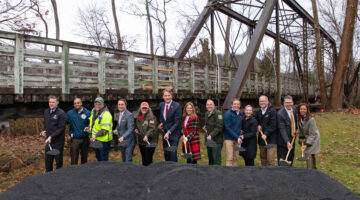When Sherman, Texas, urgently needed to expand its wastewater treatment plant capacity due to a booming tech industry, the city turned to the Construction Management-at-Risk (CMAR) delivery method. Kiewit was selected by the City to help with its first utility-related CMAR.
CMAR is a qualifications-based collaborative delivery method involving contractor and engineer, under separate contracts, working as one team alongside the owner early in design to improve constructability, cost and schedule through value engineering opportunities.
In this fast-paced project, the Sherman WWTP is adding to its existing facility with a membrane bioreactor plant, creating a new treatment train which will treat 4 million gallons per day (MGD) expandable to 16 MGD. Preconstruction services aided rapid design progression of a lift station with force main, headworks, fine screens, equalization basin, blowers, membrane basins, raw activated sludge/waste activated sludge pumping equipment, electrical systems, site grading and balance of plant.
The main benefits to using CMAR delivery are scope refinement aided by constructability feedback and value engineering, and schedule flexibility to make best-for-project decisions. Its success relies on engagement from all stakeholders and lessons learned from everyone in the room. The Sherman WWTP project team established trust by utilizing task force meetings to engage in detailed discussions on the challenges engineers are facing and how design decisions may impact the project. Bringing construction experts, owners, engineers, subcontractors and operations staff to the same table speeds up decision-making and helps the team weigh decisions through alternative analysis and cost comparisons to figure out what is best for the project.
Kiewit provided its CMAR processes and experience to influence team structure and align the team during preconstruction. The team set up partnering workshops to align on the project goals and mission, used partnering tools to keep open and transparent communication and had full engagement during the design process.
“This team had to build a lot of trust early on because of the tight schedule. The collaboration was open, and we felt like we could bring up critical topics. The team works together as one team. Everyone participated in the value engineering process during design,” said Preconstruction Manager Colin Bunker.
Plant operators championed numerous cost-saving and schedule-shortening strategies. During task force meetings, a plant supervisor contributed insights that enabled engineers to make a coating decision that did not adversely affect operations, potentially saving millions in project cost and schedule.
Bunker adds, “We helped the City push design and issued bid packages with incremental design to meet the aggressive schedule. The City’s other delivery options wouldn’t have allowed that. This delivery method gave the project the best chance to achieve its goals.”


